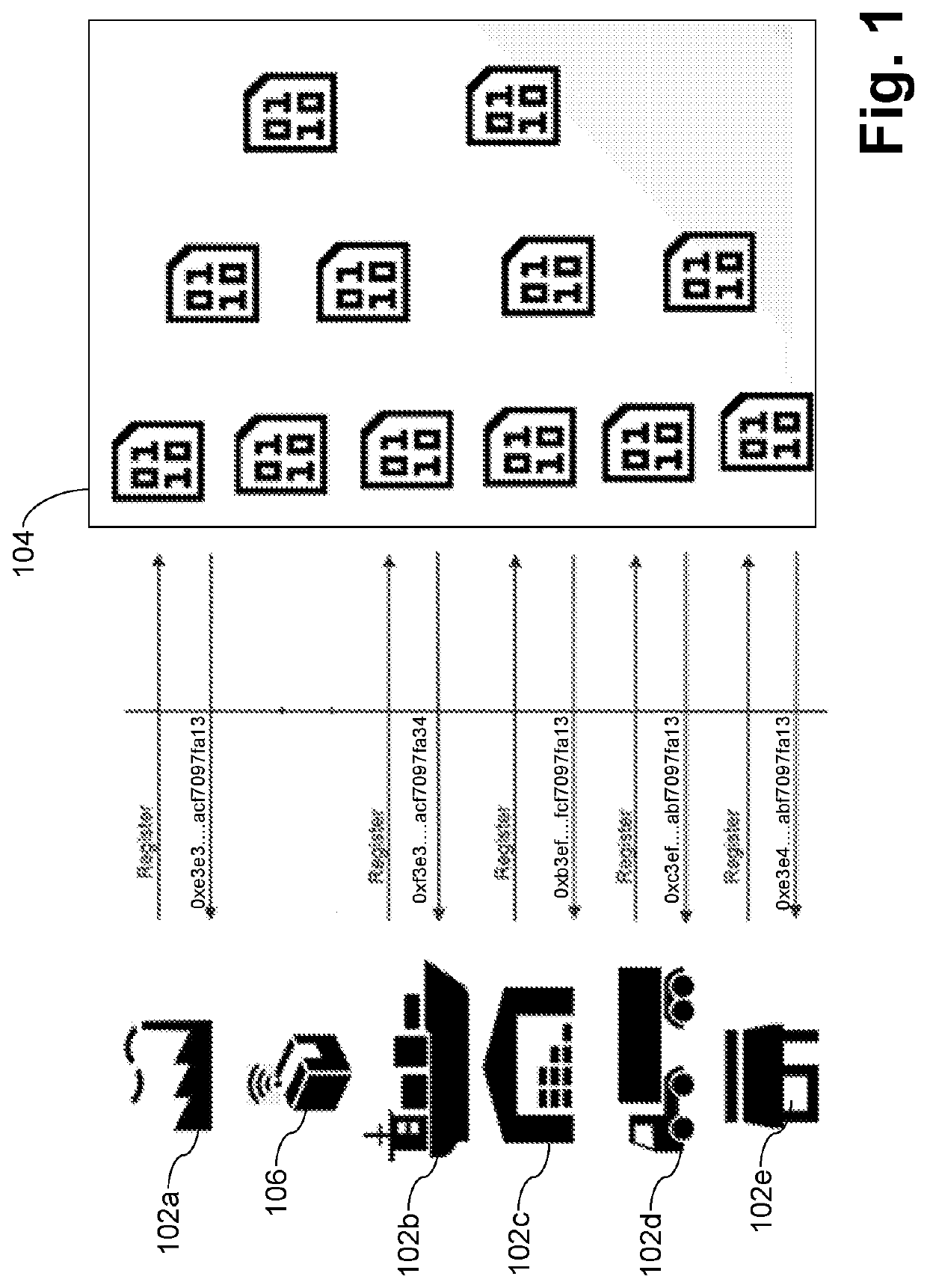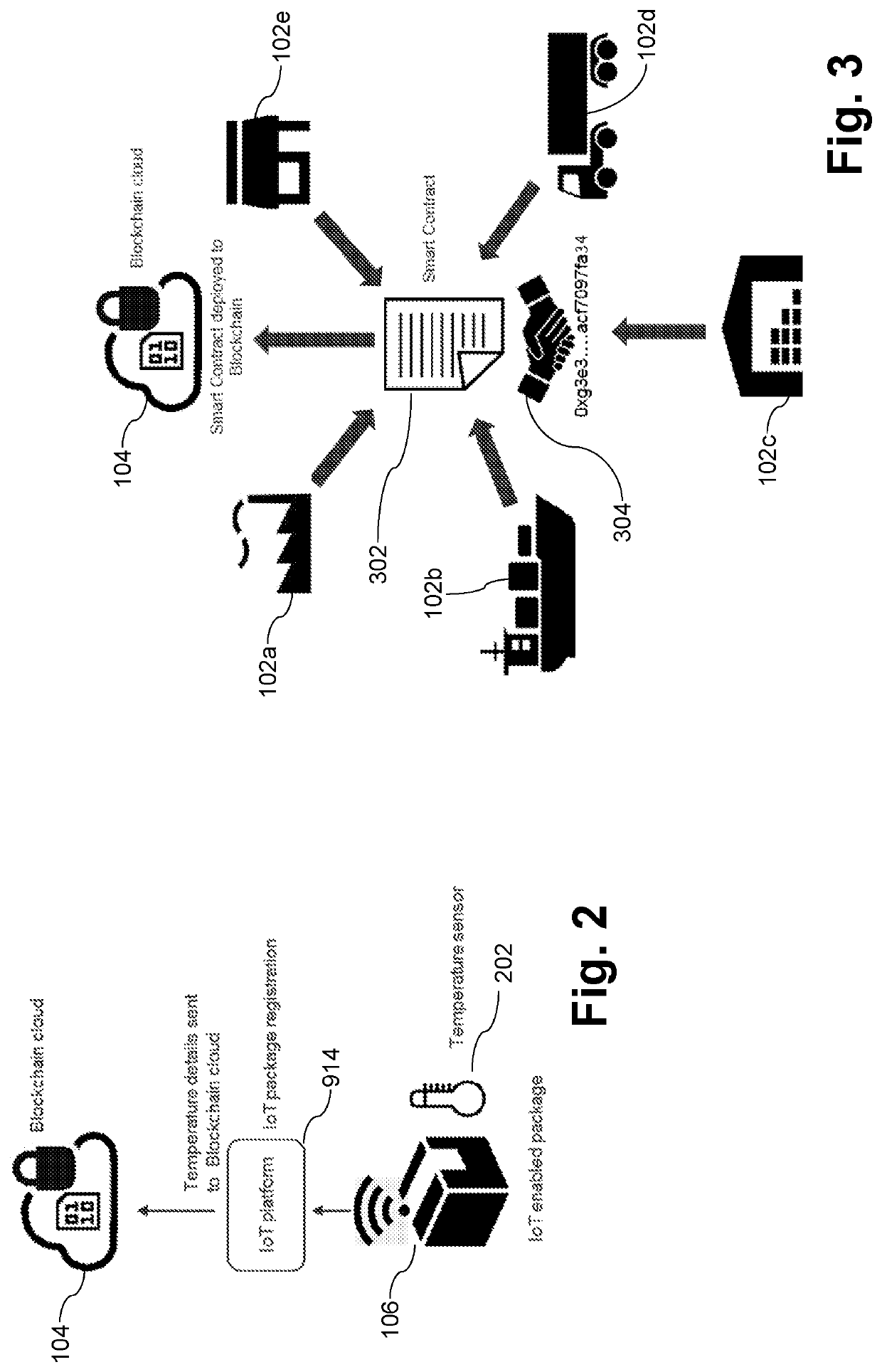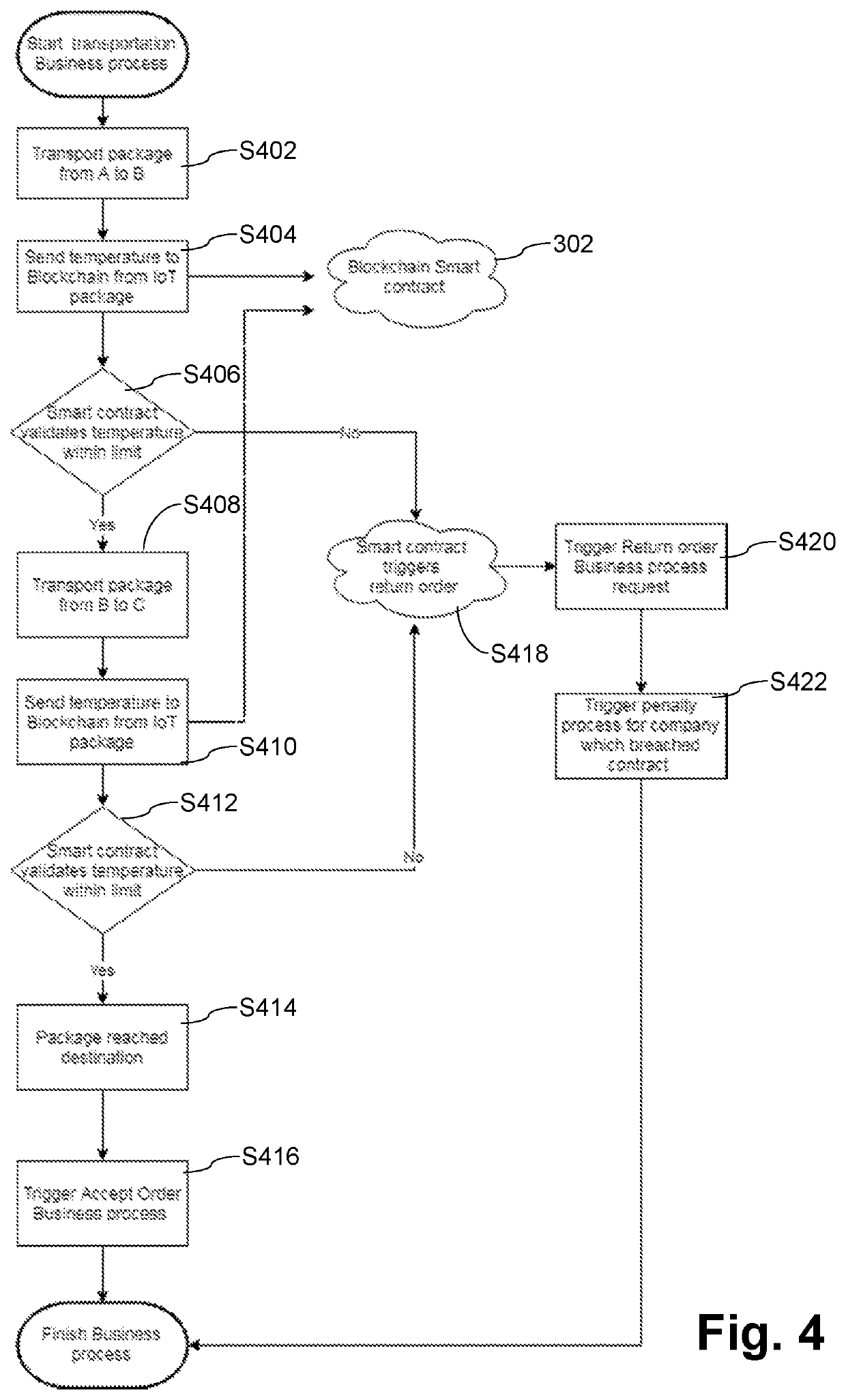Systems and/or methods for securing and automating process management systems using distributed sensors and distributed ledger of digital transactions
a technology of process management system and distributed ledger, applied in the field of process management system, can solve the problems of affecting cost-effectiveness, complex business processes in today's interconnected and interdependent world, and a plethora of heterogeneous, and achieve the effects of convenient distribution processing, extensibility, flexibility, and survivability
- Summary
- Abstract
- Description
- Claims
- Application Information
AI Technical Summary
Benefits of technology
Problems solved by technology
Method used
Image
Examples
example implementation and example use case
[0061]Details concerning an example implementation and an example use case are provided below. It will be appreciated that this example implementation is provided to help demonstrate concepts of certain example embodiments, and aspects thereof are non-limiting in nature unless specifically claimed. For example, descriptions concerning example component configurations, event types, event data packets, smart contract code, etc., are non-limiting in nature unless specifically claimed. Similarly, it will be appreciated that this example use case is provided to help demonstrate concepts of certain example embodiments, and aspects thereof are non-limiting in nature unless specifically claimed. For example, descriptions concerning example parties, goods, sensor readings, parameters, actions, etc., are non-limiting in nature unless specifically claimed. In brief, the example embodiments described herein may be applied in connection with different architectures and / or different use cases.
[00...
PUM
 Login to View More
Login to View More Abstract
Description
Claims
Application Information
 Login to View More
Login to View More - R&D
- Intellectual Property
- Life Sciences
- Materials
- Tech Scout
- Unparalleled Data Quality
- Higher Quality Content
- 60% Fewer Hallucinations
Browse by: Latest US Patents, China's latest patents, Technical Efficacy Thesaurus, Application Domain, Technology Topic, Popular Technical Reports.
© 2025 PatSnap. All rights reserved.Legal|Privacy policy|Modern Slavery Act Transparency Statement|Sitemap|About US| Contact US: help@patsnap.com



